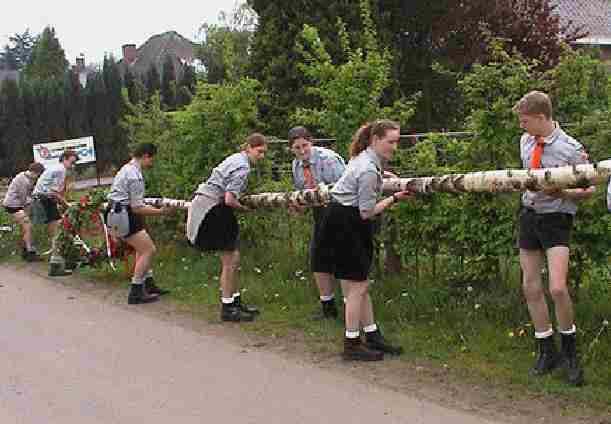
Figure 1.--VNJ members here pr brining the May pole to the dance site. In Flemish it is called a "Meiboomplanting". This one occurred in 2000 at Belsele.


Figure 1.--VNJ members here pr brining the May pole to the dance site. In Flemish it is called a "Meiboomplanting". This one occurred in 2000 at Belsele. |
The May Pole is a well established Eropean tradition. The annual ritual of putting up a May pole is an important event for VNJ groups. The May Pole is a tradition adopted by Christian Europeans from the Celts that inhabited Belgium and Flannders.
Called Beltane by the Celts, Walpurgis by the Teutons, and Floralia by the Romans, May festivals were a time of "wearing of the green." Throughout the Northern Hemisphere, the month of May is a time to celebrate renewal of life. May is named for Maia, grandmother, the
Goddess of death and fertility. Maia scorns marriage, so it is a good idea to put weddings off until June. Although less stern goddesses now oversee May festivities, wreaths and buskets of Hawthorn are still used in some May festivals in Maia's honor.
The May Pole is the most familiar feature of May festivities, but it has three distinct interpretations. In some cultures, the May Pole represented the world center, or alternately, the hub of the Wheel of heaven. In ancient times, the intricate dance of weaving cords around the pole was a magical attempt to direct Nature, which had become topsy-turvy over the course of time, back in order. Today the
dance is performed by any who wish to participate in weaving the magic.
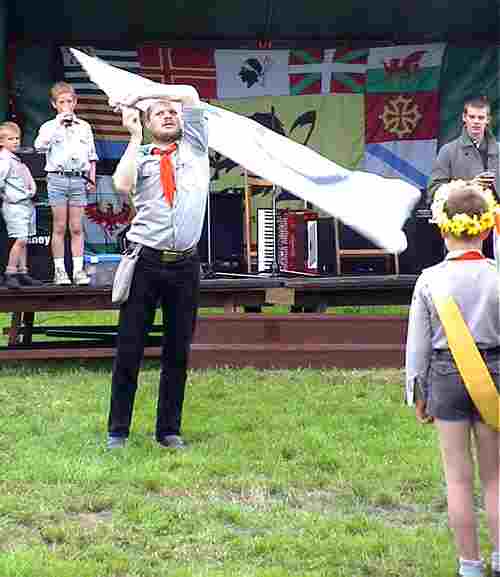
Figure 2.--A lot of flag waving accompanies the May pole event. |
In other cultures, the May Pole was the Tree of Life, or a symbol of it. And this tree-- to borrow a phrase from Billy Holiday-- bore strange fruit. This is where the Savior was sacrificed in order to cleanse the earth. Holy Communion, eating his flesh and drinking his
blood was possibly restricted to the priest class, but symbolic May Wine was liberally imbibed by the whole community. Hundreds of years later, the Christian lunar festival of Easter would replace the ancient solar festival as the time of renewal and rebirth.
The third meaning of the May Pole most clearly remains today. It is a fertility symbol, representing the male principle of fertilization. Female principles are
represented by baskets and wreaths used in the dances around the pole. In past times, the hand-fasting movements of the dances would give young couples license to 'go into the green' together. In some regions, a merlin, or renegade friar, would preside over the mock
marriages. Even today, unwed couples consummate the mock marriages performed around the May Pole. Merry-begats, as they were called in England, were usually not acknowledged by their fathers. These babies were said to have been fathered by god.
Germany
In northwest Germany, May Poles are tall trees, cut down and stripped of bottom branches. The upper branches are decorated, then the pole is hoisted, often with the help of a crane, onto a tall post high above the villages. In southern Germany, the May Pole is a stylized
structure that will stand for the entire year. On each of its branches is a symbol of each trade or vocation that the villagers pursue.
England
Traditional May Day is a solar festival, celebrated on May fifth, halfway between spring equinox and summer solstice. In England, Queen of the May, Maid Marian, mounted on a white horse is the central figure in the May Day mumming. In ancient times, she would
pair off with Merddin as her consort. Nowadays, Merddin is the bearded old wizard, Merlin, and Marian's consort is Robin Hood.
Robert Graves identifies Maid Marian as the sea Goddess Marian, a virgin dressed in a blue robe, wearing a string of pearls. Occasionally referred to as Merrymaid, but more commonly known as Mermaid, she was worshipped by merriners, (now spelled mariners) who
would sacrifice to her. "Mer" meaning sea, is the origin of the epithet Merry England, --Rose in the Sea.
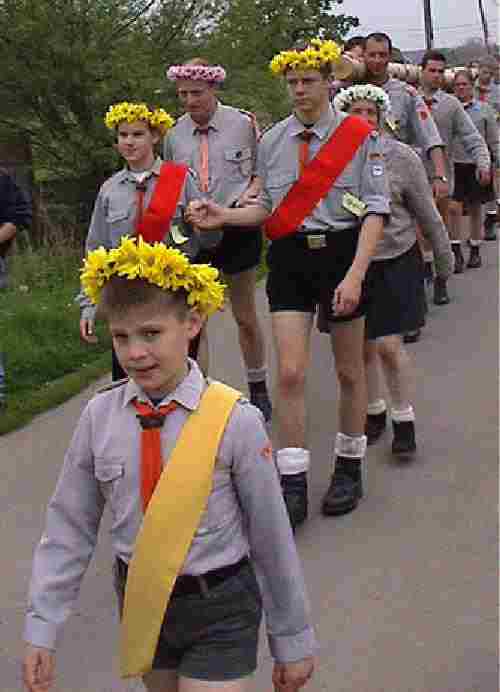
Figure 3.--Some of the VJN members wear flower garlands. Others have different sashes. I'm not sure how these oarticipants were selected or what the different colored sashes meant. |
Like the Goddess, Maid Marian is surrounded with Merry men. Little John, Will Scarlet, Friar Tuck, Robin Hood, and others form a band of thirteen. Morris Men, who perform a stylized folk dance are commonly believed to have been imported from the near east,
Moors who danced a Moorish dance. However, a more ancient spelling indicates that these may have been Mari's men. Mari, the Mother Goddess, fruitful, and compassionate, is usually portrayed holding an apple from the Tree of Life. She turns the Wheel of
heaven, and is the mother of the Archer of Love.
Iris
Iris is also known as the mother of Love. She was the Goddess of the rainbow, which was the bridge between heaven and earth. In Greek mythology, she lured mourning Demeter, the grain Goddess, out of her cave so that the land would become fruitful again. In
Genesis, angered by Yahweh's Flood, she removed the bridge from earth to heaven so he could not receive his sacrifices. When he promised to never flood the earth again, Iris replaced the rainbow.
Japan
In Japan, Iris's rainbow bridge is called the road of the gods. May is Iris month, with Boy's Doll Day celebrated on May fifth. Young men drink Iris tea and bath in an Iris infusion to promote health and fertility. Because of the sword shaped leaf and the blossom that resembles female genitalia, the Iris is the symbol of the male and female principles united.
Celebrated for thousands of years throughout diverse cultures, Mayday could be the most ancient religious festival in the Northern Hemisphere. Ritual human sacrifice to a death/fertility goddess was certainly practiced until the 1st Century BCE. As nature became less fearsome, and more cultivated, the nature goddess became less powerful and bloodthirsty. Today, we still celebrate the remnants of an ancient religion, Nature turning on the Wheel of Heaven.
The VNJ members are pictured here in a Meiboomplanting at Belsele in 2000. There are a lot of events besides raising the pole and dancing aroubd it. Some of the VJN members wear flower garlands. Others have red and yellow sashes. The children who are wearing flower garlands are the winners of the May games. We call them "Princees of May'.
The red en yellow sashes are made to dance around a tree, "teh May-three". It's a symbolic dance to start the Spring in Nature.
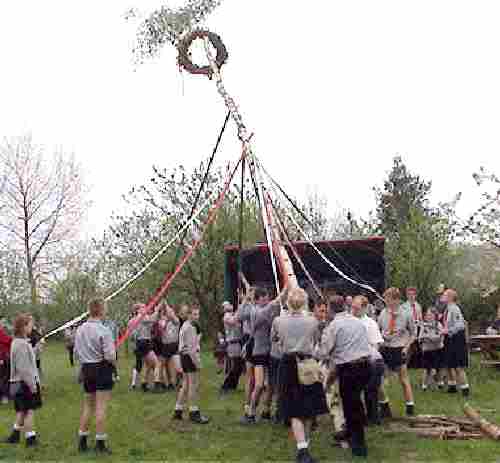
Figure 4.--The actual raising of thge May pole. |
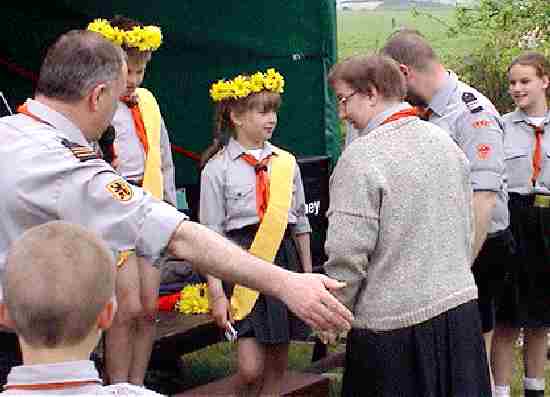
Figure 5.--Both boys and girls wear the flower garlands and sashes at the May pole events. |
Navigate the Historic Boys' Uniform Chronology Pages:
[Return to the Main chronologies page]
[The 1900s]
[The 1910s]
[The 1920s]
[The 1930s]
[The 1940s]
[The 1950s]
[The 1960s]
[The 1970s]
[The 1980s]
[The 1990s]
[The 2000s]
Navigate the Historic Boys' Uniform Web Site:
[Introduction]
[Bibliographies]
[Contributions]
[Chronologies]
[FAQs]
[Garments]
[Organizations]
[Boys' Uniform Home]
Navigate the Historic Boys' Uniform Web organizatiion pages:
[Return to the Main VJN page]
[Boys' Brigade]
[Camp Fire]
[Hitler Youth]
[National]
[Pioneers]
[Royal Rangers]
[Scout]
